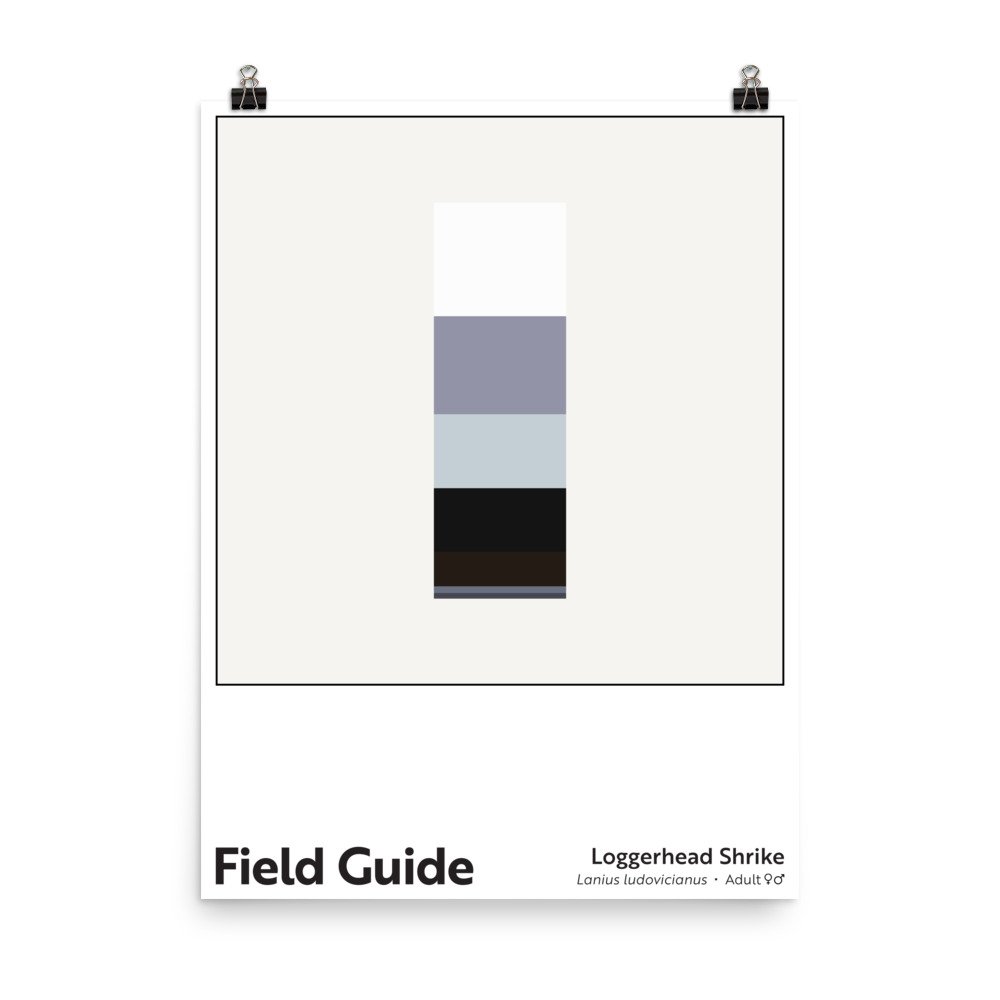Field Guide : Loggerhead Shrike
Field Guide : Loggerhead Shrike
Unlimited edition. 18 x 24 inch, museum-quality poster on matte paper.
The famous “butcher bird”! (Or infamous, depending on one’s perspective.) Technically speaking, all of the world’s shrikes are butcher birds – their genus name, Lanius, translates as “butcher” – but the bloody nickname is, for me, most closely associated with the loggerhead shrike, North America’s only endemic shrike species.
So why is this fine looking bird associated with slaughter? Its bloody nickname has to do with the shrike’s creative, if brutal way of consuming larger prey items. You’re likely to see a loggerhead shrike perched on a treetop, fence, or power line in open habitat. From there, the bird spots prey and sallies out to grab the large insect or small bird, reptile, amphibian, or mammal. Although the shrike is adept at killing using its falcon-like, hooked beak (biting the neck and severing the vertebrae), it lacks the strong legs, feet, and talons of a raptor, so a captured lizard, for example, is not easily torn apart for a meal. The shrike’s solution? Make use of the environment. It carries the lizard to a barbed wire fence or thorn-bearing shrub and impales the reptile there. The shrike then rips the lizard apart and feeds. If no “spikes” are around, the shrike will sometimes use a forked branch and wedge the prey item into the fork. The butcher bird’s predatory adaptations led me to create a little rhyme about them as a child: “The shrike – it strikes, then spikes.”
Tenacious and intimidating though the loggerhead shrike may be, it’s considered a “near threatened” species. Loss of grassland habitat (due to increasingly intensive farming practices as well as the transition of some grasslands to woodlands) has led to a steady decline in the loggerhead shrike population across North America.
Note: These archival poster prints feature rich, appealing colors. I encourage customers to take care in handling them until they are framed/protected for display; the darker colors on the matte paper can be scratched. They ship rolled, so customers need to flatten them before framing (or have their framer do so).
Charitable Sales Model: Whenever one of these poster prints is purchased, a charitable contribution equal to 10% of the print’s cost (or $3.60) is made to a nonprofit working to tackle environmental or social challenges. Read more about my charitable sales model here.

